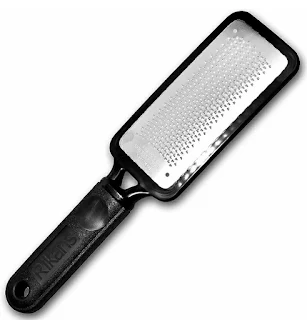Foot files and pumice stones are common tools used for foot care and exfoliation.
Amazon's Choice Odor Spray Shop Now!
Here's everything you need to know about them:
Purpose: Both foot files and pumice stones are designed to remove dead skin cells, calluses, and rough patches from the feet, leaving them smoother and softer.
Materials:
Foot Files: These are typically made of metal, ceramic, or plastic with abrasive surfaces.
Pumice Stones: Pumice stones are natural volcanic rock formed from cooled lava. They have a porous texture.
Usage:
Foot Files: Use foot files on dry or slightly damp skin. Gently rub the file over the rough areas of your feet in a back-and-forth motion. Be cautious not to overdo it to avoid damaging healthy skin.
Pumice Stones: Soak your feet in warm water for a few minutes to soften the skin. Wet the pumice stone and gently rub it over the rough areas, using a circular motion.
Safety:
Both tools should be used gently to avoid injuring the skin.
Diabetics and individuals with sensitive skin should consult a healthcare professional before using these tools.
Cleaning:
Rinse foot files after each use to remove dead skin and bacteria.
Pumice stones should be allowed to dry thoroughly to prevent the growth of mold or bacteria.
How often you use these tools depends on the condition of your feet. Generally, once a week or as needed is sufficient.
Moisturize:
After using foot files or pumice stones, it's essential to apply a moisturizing foot cream or lotion to keep your skin hydrated.
Maintenance:
Replace foot files if the abrasive surface becomes dull or worn out.
Pumice stones may deteriorate over time, and it's a good idea to replace them when they no longer effectively exfoliate.
Hygiene:
To prevent the spread of foot fungus or infections, avoid sharing these tools with others.
Pros and Cons of the Foot Files/Pumice Stones
Alternative Products:
There are electric callus removers and foot scrubs available for more intensive foot care.
Remember that foot care is an important part of overall hygiene and can help prevent discomfort and issues like calluses and cracked heels. Always use these tools with care and, if in doubt, consult a podiatrist or healthcare professional for advice on foot care.




